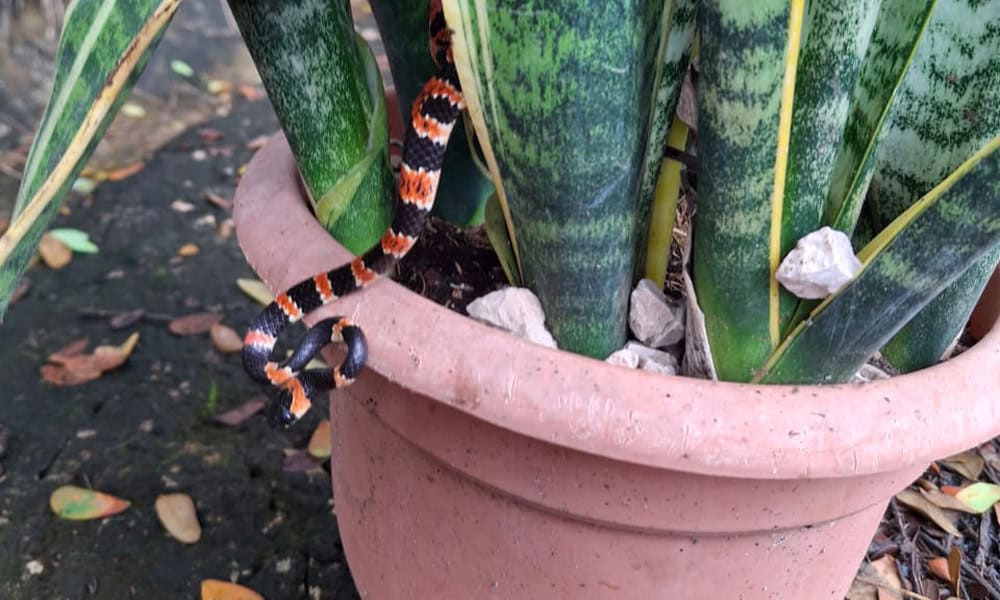Last Sunday I was in full dad-football mode. The NFL teams that I actually care about had both lost horribly earlier in the afternoon, and I had transferred my attention to a game where I had no rooting interest whatsoever. What I did have, were my feet kicked up and a cold beer at my side, so I was quite content. While I was lazily watching a football game, my wife, who has recently decided to be a full-on plant lady, was in the front yard doing a bunch of wheelbarrow, dirt, and shovel-based activities.
At some point I vaguely hear her outside repeating some word, but my interest in the football outweighed my interest in finding out what that word was. A few seconds later she flings the front door open and decares, “Snake!” This isn’t the first time this has happened. In the time since she started playing with plants, she has sounded the snake alarm several times, pulling me outside to remove boas, Central American lyre snakes, and banded cat-eyed snakes.
This time she directed my attention to a ceramic pot sitting on the front porch which was home to a plant known as mother-in-law’s tongue, or, ironically, snake plant. Coiled amongst the vertical leaves of the snake plant was a long, thin snake with alternating orange and black bands, a bulbous head, and big, round black eyes. I couldn’t identify the snake off of the top of my head, but I knew there was a group of snakes in my Costa Rica reptiles book with rounded heads that were harmless. That being said, snakes with alternating striped patterns could be some sort of coral snake, which are venomous, so I wasn’t about to grab it. I took the pot across the street to an open field, snapped a picture with my phone, and encouraged my new friend to move along with his day.
With the gardening-based disaster now averted, I quickly returned to my sweaty little office and began searching for information about the snake. Here’s what I found. The snake was a ringed snail-eater (Sibon anthracops), also known as Cope’s snail sucker. The Spanish name is caracolera anillada. They’re one of several species of snail-eaters that call Costa Rica home, each with a blunt, rounded head.
These beautiful, delicate snakes are nocturnal. While they readily climb shrubs and trees, they are most frequently observed on the ground. Though they’re found mostly in dry Guanacaste, they tend to seek out areas with more moisture like the edges of streams. As their name implies, they feed on snails. They also prey on slugs and are included in a group of snakes that seek soft-bodied prey called ‘goo-eaters.’
As I mentioned above, the bright colors and alternating stripe pattern of the ringed snail-eater gave me pause, because some snakes with that coloration are venomous. In the case of this species, their coloration is most likely an example of coral snake mimicry. In coral snake mimicry, a harmless non-venomous species of snake evolves a similar color pattern to a venomous coral snake, affording it all of the advantages of appearing to be a snake full of dangerous venom that predators should avoid, without the trouble of producing any venom.
About the Author
Vincent Losasso, founder of Guanacaste Wildlife Monitoring, is a biologist who works with camera traps throughout Costa Rica. Learn more about his projects on facebook or instagram. You can also email him at: vincent@guanacastewildlifemonitoring.com






